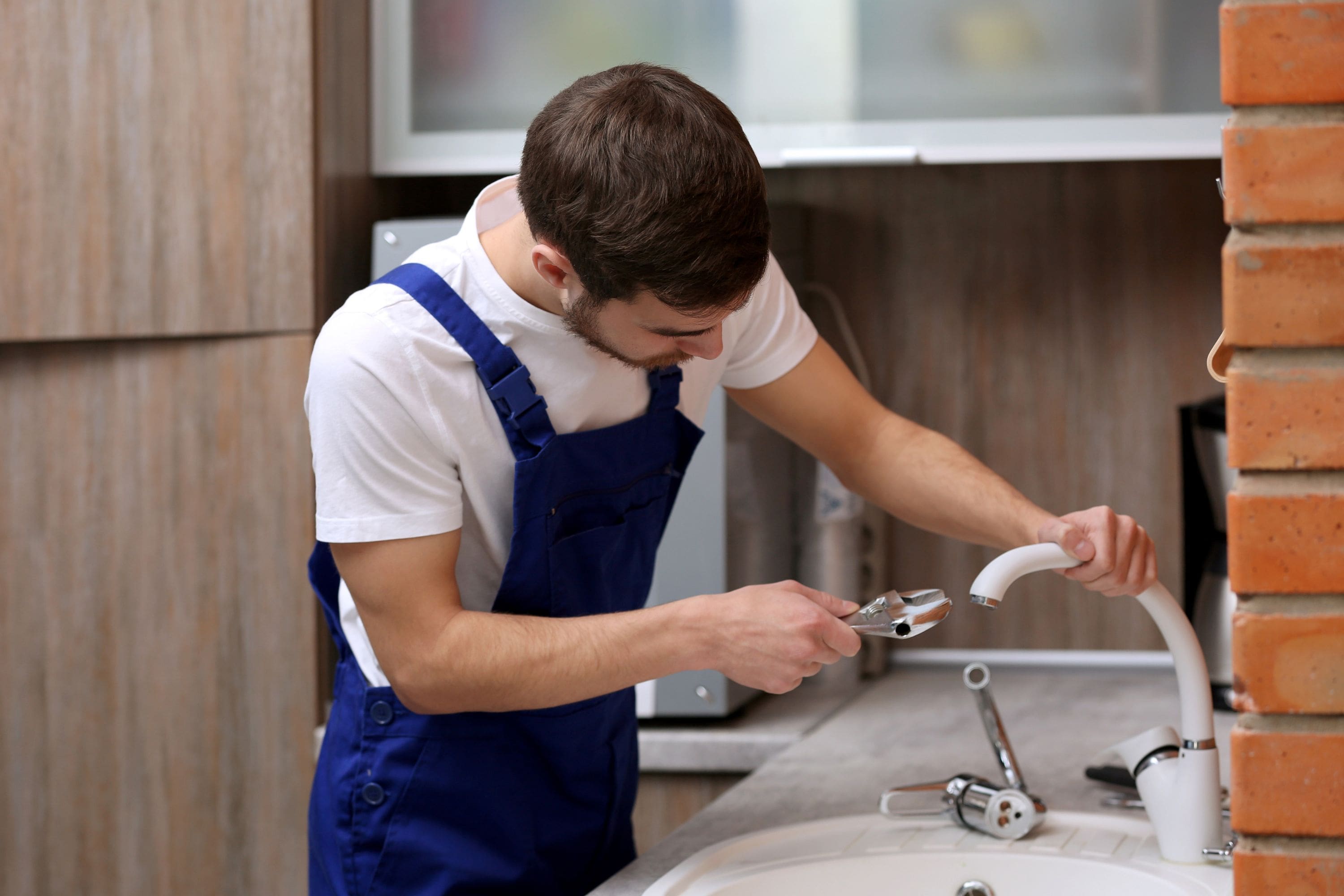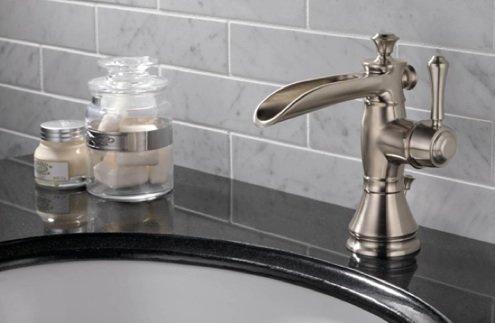Your Explanations Behind Repairing a Leaking Faucet
Your Explanations Behind Repairing a Leaking Faucet
Blog Article
What're your thoughts regarding How to Fix a Dripping or Leaky Faucet ?

Dripping faucets might look like a small trouble, yet their impact goes beyond just the annoyance of the sound. From wasting water to incurring unneeded monetary prices and health and wellness risks, disregarding a trickling faucet can result in numerous consequences. In this write-up, we'll explore why it's important to address this usual home issue immediately and effectively.
Waste of Water
Environmental Effect
Trickling faucets add substantially to water wastage. According to the Environmental Protection Agency (EPA), a solitary faucet leaking at one drip per secondly can waste more than 3,000 gallons of water each year. This not just strains water sources yet also impacts ecosystems and wildlife depending on them.
Financial Costs
Boosted Water Costs
Beyond the environmental influence, dripping faucets can pump up water costs substantially. The collected wastefulness over time translates into higher energy expenses, which could have been prevented with prompt fixings.
Potential Building Damage
Furthermore, extended leaking can cause harm to components and surfaces bordering the tap. Water buildup can create discoloration, corrosion, and even structural issues if left ignored, leading to extra repair work expenses.
Health and wellness Worries
Mold And Mildew and Mold Development
The continuous existence of dampness from a leaking tap produces a suitable atmosphere for mold and mildew and mold development. These fungis not only compromise indoor air top quality yet additionally present health and wellness risks, particularly for individuals with respiratory system problems or allergic reactions.
Waterborne Illness
Stagnant water in dripping taps can end up being a breeding place for germs and other microorganisms, enhancing the risk of waterborne conditions. Impurities such as Legionella germs flourish in stagnant water, possibly bring about severe diseases when ingested or breathed in.
DIY vs. Specialist Repair
Pros and Cons of Do It Yourself Repair
While some might try to deal with a leaking tap themselves, DIY fixings include their own collection of difficulties. Without correct understanding and tools, do it yourself efforts can worsen the issue or bring about incomplete repairs, extending the trouble.
Advantages of Working With a Professional Plumber
Hiring a specialist plumber guarantees that the underlying source of the leaking tap is attended to efficiently. Plumbers possess the expertise and devices to detect and repair faucet concerns efficiently, conserving time and minimizing the danger of more damage.
Step-by-Step Overview to Dealing With a Dripping Tap
Tools Needed
Prior to attempting to repair a trickling faucet, gather the needed devices, including an adjustable wrench, screwdrivers, substitute components (such as washing machines or cartridges), and plumber's tape.
Typical Faucet Issues and Their Solutions
Recognize the type of tap and the details issue triggering the drip. Typical troubles consist of worn-out washing machines, rusty shutoff seats, or damaged O-rings. Refer to producer directions or on-line tutorials for detailed guidance on repair work.
Preventive Measures
Routine Upkeep Tips
To stop trickling taps, execute regular upkeep such as cleansing aerators, inspecting for leaks, and replacing worn-out parts quickly. Additionally, think about setting up water-saving devices or upgrading to more efficient fixtures.
Importance of Prompt Repair Works
Attending to leaking faucets as soon as they're discovered avoids further water wastage and possible damages, inevitably conserving both water and money over time.
Impact on Residential Property Worth
Understanding of Well-Maintained Home
Preserving a residential property in good condition, consisting of dealing with upkeep problems like leaking faucets, boosts its regarded value and value amongst possible purchasers or renters.
Influence on Resale Worth
Qualities with well-maintained plumbing components, including faucets, command greater resale values in the real estate market. Resolving leaking faucets can add to a positive impression throughout home examinations and settlements.
Environmental Duty
Private Contribution to Preservation
Taking responsibility for dealing with leaking taps lines up with broader initiatives toward water conservation and ecological sustainability. Every individual's activities collectively make a substantial impact on maintaining precious sources.
Sustainable Living Practices
By focusing on prompt repair services and adopting water-saving practices, people contribute to lasting living techniques that benefit both existing and future generations.
Conclusion
Attending to a dripping faucet surpasses mere comfort; it's an important action toward saving water, lowering monetary expenses, and safeguarding health and residential or commercial property. Whether with DIY repair work or specialist help, acting to repair dripping faucets is a tiny yet impactful way to advertise accountable stewardship of resources and contribute to a much healthier, much more sustainable future.
How to Fix a Leaky Faucet: Step-by-Step Repair Guide
A leaky faucet may seem like a simple annoyance, but if it's not fixed promptly, that leak could cost hundreds to potentially thousands. From water damage to mold, mildew, and high water bills, even a tiny leak can be catastrophic if left unattended. Damage like this can even affect the overall value of your home, so it's important to take the right approach for leaky faucet repair. You may need the help of a plumber in some cases, but we've got a few tips you can try on how to fix a leaky faucet before calling the pros.
Four Faucet Types
When you're learning how to fix a leaky faucet, the first step is knowing what kind of faucet you're working with! There are four common types.
Cartridge Faucets
Cartridge faucets come in one- or two-handled varieties. In one-handled cartridge faucets, hot and cold water combines in a single cartridge. In the two-handled versions, hot and cold water are controlled separately and mixed in the faucet.
Ball Faucets
Ball faucets have a single lever you push up and down to adjust the pressure and rotate to change the temperature. A slotted metal ball controls the amount of water allowed into the spout.
Compression Washer Faucets
They're the oldest type of faucet, but they're still used in many homes — especially older ones. Compression faucets have two separate handles that, when turned, raise or lower the washer that seals a water valve. This valve stops water from flowing through the faucet when it is turned off.
Disc Faucets
Disc faucets rarely need to be repaired due to their maintenance-free design. The water flow is controlled by two discs — the upper one raises and lowers against a fixed lower disc, creating a watertight seal. If your disc faucet starts leaking, you may need to replace the seals or clean residue buildup from the inlets.
Fixing a Leaky Faucet
Step 1: Turn Off the Water
Whether you're learning how to fix a leaky bathtub faucet or how to fix a leaky kitchen faucet, always turn off the water supply to your working area when you're fixing a leak. The last thing you want is a flood added to your list of things to fix.
Look for the shutoff valves below your sink or around the tub and turn them clockwise to stop the water flow. If your faucet doesn't have shutoff valves, you may need to turn off the water for the whole house. Check to make sure it's off by turning the faucet on. If nothing comes out, you're ready to start the repair.
Step 2: Take Apart the Faucet
How you disassemble your faucet depends on the type of fixture you have. You can use a flathead screwdriver to remove the caps on top of the handle or handles for cartridge and compression faucets. Inside, you should see handle screws. Unscrew these with a screwdriver to remove the handle.
Disc- and ball-style faucets will typically have an inlet screw near the handle, and removing that will reveal the interior of the faucet.
Detach the Valve Stem
For cartridge- and compression-style faucets, you'll see the inner valve stem or cartridge once you remove the faucet handles. If you have a compression faucet, unscrew the brass valve stem. If you have a cartridge faucet, pull out the cartridge. If your cartridge has been in place for a while, it may require some tools or extra force to remove it due to mineral deposits.
Examine and Replace Parts
Once you've removed the parts, check them out to confirm what needs to be replaced. You may see corroded rubber washers, O-rings, stems, or cartridges. On a ball-style faucet, check the seats and springs for damage.
If you need to repair a leaky disc faucet, check the inlet and seals on the lower disc.
Once you determine what parts must be replaced, visit your local hardware store. Bring the damaged parts with you to ensure you can purchase the correct components to replace them.
Clean Valves and Faucet Cavity
If you've removed a stem or cartridge, you may notice mineral buildup in the faucet's threads. Use white vinegar to clean the valve seat by soaking it for a few minutes, then scrub it away with a soft toothbrush and rinse with warm water. You can also clean the interior of the faucet in the same way.
Reassemble the Faucet
Once your faucet is cleaned and the required parts have been replaced, it's time to reassemble it. Put the pieces back together and slowly turn the water supply back on. Doing this slowly is crucial because too much initial water pressure can damage the new hardware you've just installed.
https://homewarranty.firstam.com/blog/how-to-fix-leaky-faucet

I was shown that article on Leaky Faucets: Why They Happen & What to Do About Them through an acquaintance on our other domain. If you please take the opportunity to share this page if you appreciated it. Thanks for your time spent reading it.
Report this page